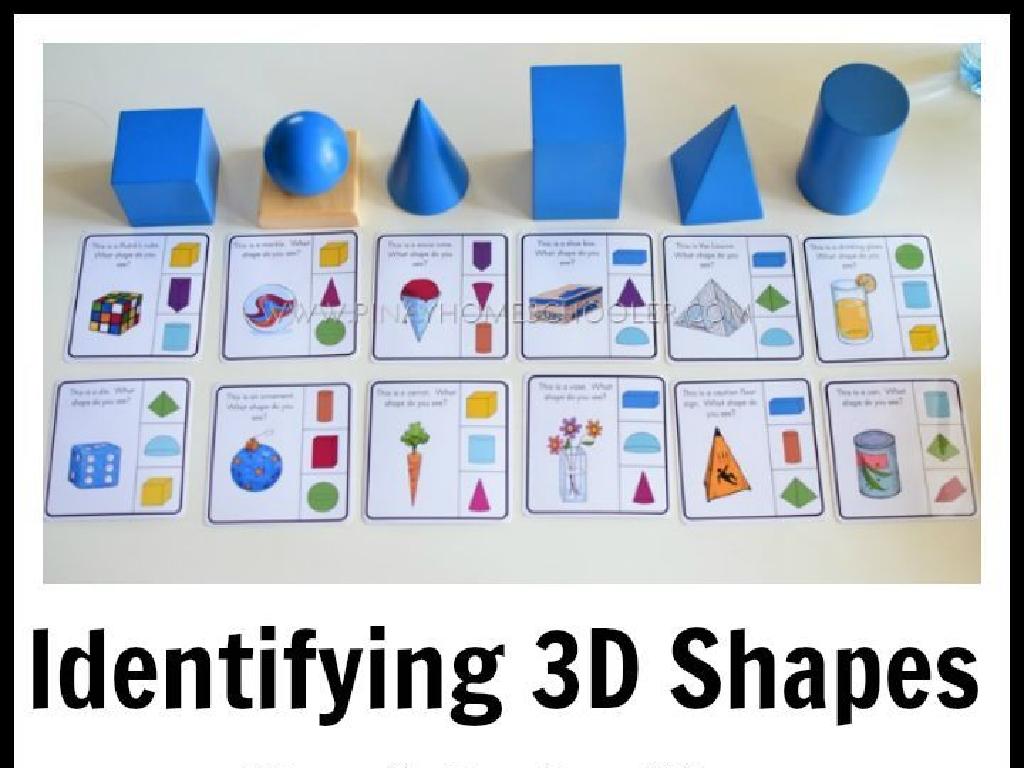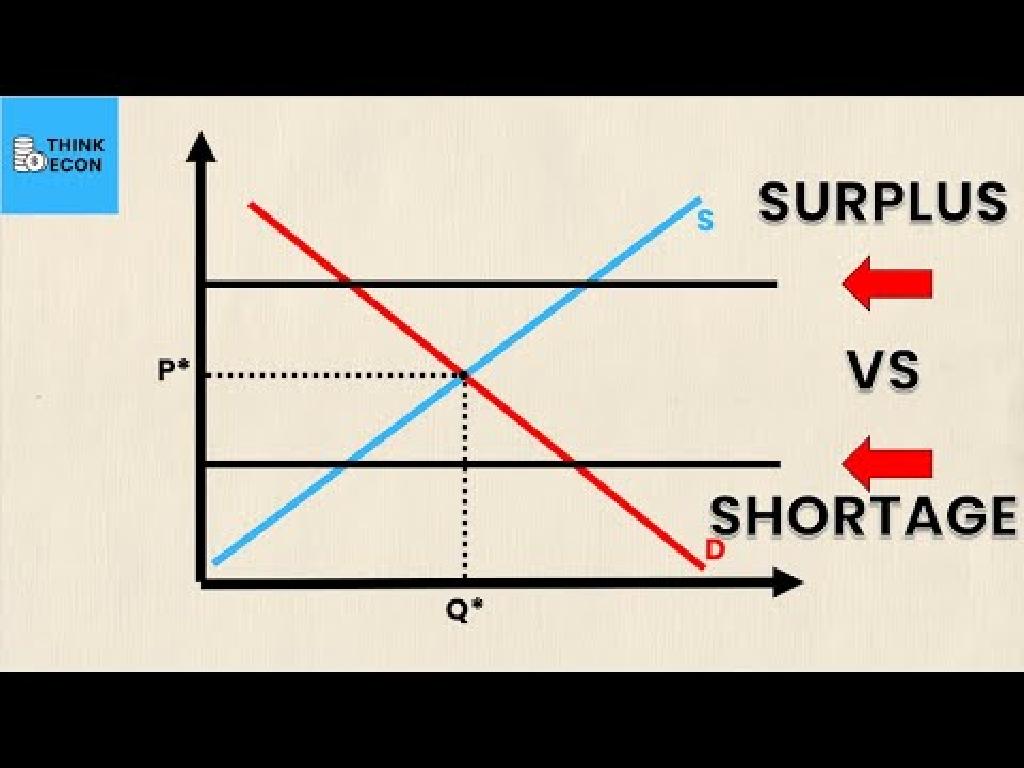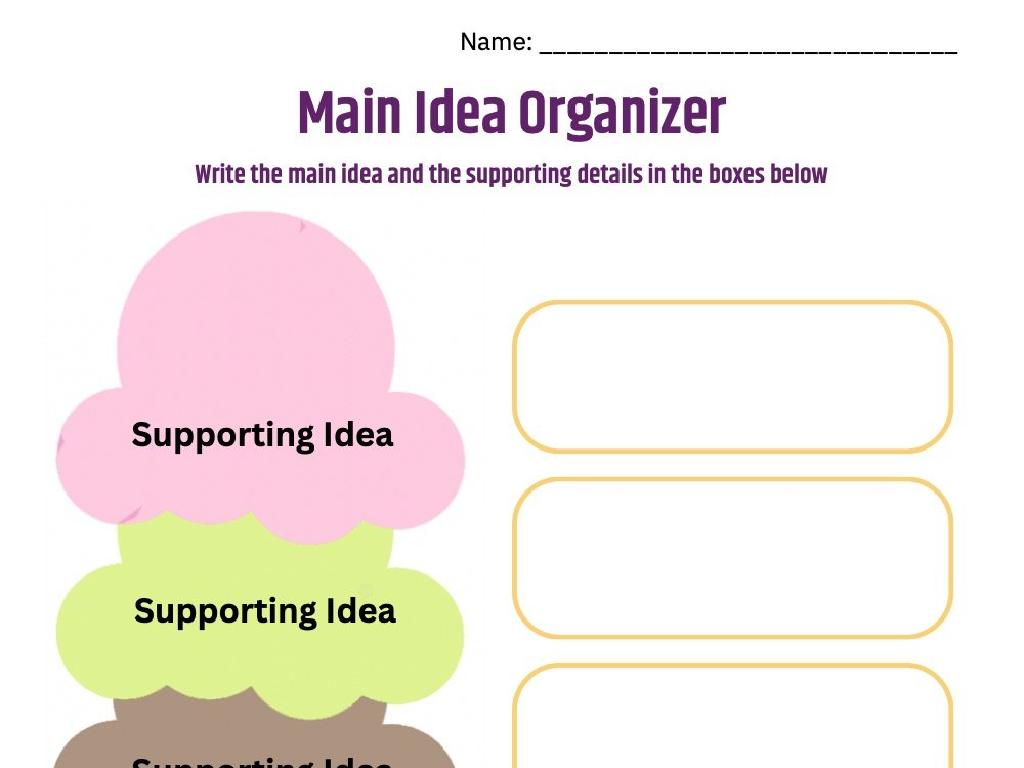Evaluate Variable Expressions For Sequences
Subject: Math
Grade: Eighth grade
Topic: Sequences
Please LOG IN to download the presentation. Access is available to registered users only.
View More Content
Welcome to Sequences!
– Understanding sequence patterns
– A sequence is an ordered list of numbers following a certain rule.
– Sequences in daily life
– Daily examples: days of the week, monthly rent payments.
– Preview: evaluating expressions
– Introduction to using variables to represent terms in a sequence.
– Importance of sequence knowledge
|
This slide introduces the concept of sequences in mathematics, emphasizing the importance of recognizing patterns. Students should understand that a sequence is a set of numbers arranged in a specific order, where each number is related to the previous one through a consistent rule or pattern. Relate sequences to everyday life to make the concept more tangible, such as the progression of days or regular payment schedules. Give a brief overview of how variable expressions are used to represent sequences, setting the stage for more in-depth exploration of this topic. Highlight the relevance of understanding sequences in various real-life scenarios and in further mathematical studies.
Understanding Sequences in Math
– Define a mathematical sequence
– An ordered list of numbers following a specific pattern
– Explore simple sequence examples
– Like 2, 4, 6, 8 or 3, 6, 9, 12 (adding 2 or 3 each time)
– Recognize sequences in daily life
– Patterns in nature, music, and architecture
– Practice identifying sequences
|
Begin the lesson by defining a sequence as an ordered list of numbers that are arranged according to a certain rule. Provide simple examples of sequences, such as even numbers or multiples of 3, to illustrate the concept. Encourage students to observe and identify sequences that occur in their everyday lives, such as the pattern of tiles on the floor or rhythms in music. This will help them understand the practical applications of sequences. Conclude with an activity where students identify sequences from a set of given examples to reinforce their learning.
Types of Sequences in Mathematics
– Arithmetic sequence patterns
– A sequence with a constant difference between terms, e.g., 2, 4, 6, 8
– Geometric sequence patterns
– A sequence where each term is multiplied by a constant, e.g., 3, 9, 27, 81
– Distinguishing sequence types
– Compare terms to identify if the sequence has a common difference or ratio
|
This slide introduces students to the concept of sequences in mathematics, focusing on the two main types: arithmetic and geometric. Arithmetic sequences have a constant difference between consecutive terms, which is known as the common difference. For example, in the sequence 2, 4, 6, 8, the common difference is 2. Geometric sequences, on the other hand, have a common ratio between consecutive terms, meaning each term is obtained by multiplying the previous term by a fixed number, such as 3, 9, 27, 81, where the common ratio is 3. It’s crucial for students to learn how to distinguish between these types by looking at the patterns present in the sequences. Encourage students to practice by identifying the pattern in different sequences and classifying them accordingly. This foundational knowledge will be essential for understanding more complex concepts in algebra and calculus.
Understanding Variable Expressions in Sequences
– Define variable expressions
– Expressions that use letters to represent numbers
– Variables in sequences
– Represent terms in a sequence with variables like n-th term
– Significance of variables
– Variables allow generalization in math, making patterns workable
– Example of variable use
– For sequence 2, 4, 6, 8, use ‘2n’ to represent terms
|
This slide introduces variable expressions and their application in sequences, which is a fundamental concept in algebra. Start by defining variable expressions as mathematical phrases that contain numbers, operations, and at least one variable. Explain how variables can be used to represent specific terms in a sequence, such as using ‘n’ for the n-th term. Emphasize the importance of variables in creating general formulas that can solve for any term in a sequence. Conclude with an example, such as using the expression ‘2n’ to represent the terms in the sequence 2, 4, 6, 8, where ‘n’ is the position of the term in the sequence. This will help students understand how to create and evaluate variable expressions for sequences.
Evaluating Expressions in Sequences
– Steps to evaluate expressions
– Example: nth term of arithmetic
– For sequence 2, 4, 6, 8, find 5th term with formula a_n = a_1 + (n-1)d
– Practice: nth term of geometric
– Given 3, 9, 27, use a_n = a_1 * r^(n-1) to find 4th term
– Understanding sequence terms
– Sequence terms are positions in a pattern, like 1st, 2nd, 3rd, etc.
|
This slide introduces the concept of evaluating variable expressions within the context of sequences. Start by outlining the steps to evaluate expressions, such as identifying the sequence type and applying the correct formula. Use an arithmetic sequence as an example to demonstrate how to find the nth term by applying the formula a_n = a_1 + (n-1)d, where ‘d’ is the common difference. For practice, have students evaluate the nth term of a geometric sequence using the formula a_n = a_1 * r^(n-1), where ‘r’ is the common ratio. Emphasize the importance of understanding the position of terms in a sequence, as it is crucial for determining the value of ‘n’ in these expressions. The notes should guide the teacher through the process of explaining these concepts and provide additional examples if needed.
Let’s Practice Together: Sequences and Expressions
– Create your own sequences
– Group activity: evaluate expressions
– Work in groups to apply expressions to sequences you’ve created
– Share findings with the class
– Each group will present their sequences and evaluation
– Discuss the understanding of sequences
– Reflect on the activity and clarify any misconceptions
|
This slide sets up a class activity focused on creating and evaluating arithmetic sequences. Students will first individually create their own sequences, applying their understanding of the constant difference between terms. Then, they will work in groups to evaluate variable expressions for the sequences they’ve created. Afterward, each group will share their findings with the class, fostering a collaborative learning environment. The teacher should circulate to provide guidance and ensure that each group understands the process. Possible activities include creating sequences with different common differences, evaluating expressions for the nth term, and comparing sequences to find patterns. The teacher should prepare to address common errors and misconceptions during the discussion phase.
Sequences in the Real World
– Sequences in daily life
– Predict population growth
– Use arithmetic sequences to estimate future population sizes.
– Discuss other sequence examples
– Think about patterns in nature, finance, and technology.
– Understanding practical applications
|
This slide aims to show students the practical applications of sequences in real-world scenarios. Emphasize how arithmetic sequences can be used to predict population growth by using past data to identify a pattern and project future increases. Encourage students to discuss and identify other areas where sequences are evident, such as the Fibonacci sequence in nature, interest rates in finance, or computing algorithms in technology. This discussion will help them understand the importance of sequences in various fields and everyday life. Provide examples like the arrangement of leaves on a stem or the pattern of a spider’s web to illustrate sequences in nature. Ask students to come up with their own examples and share how sequences play a role in their lives or future careers.
Class Activity: Sequence Scavenger Hunt
– Understand scavenger hunt rules
– Find sequences around school
– Look for patterns in numbers or objects
– Document each sequence discovered
– Take notes or pictures as evidence
– Evaluate the sequences
– Use the variable expression formula to calculate
|
This interactive class activity is designed to help students apply their knowledge of sequences in a fun and engaging way. Students will search for real-life examples of sequences within the school environment, such as stair steps, locker numbers, or tiles on the floor. They should document their findings with notes or photos. After collecting examples, students will evaluate each sequence by identifying the common difference and using the appropriate variable expressions to describe them. This activity not only reinforces the concept of sequences but also encourages observation and critical thinking skills. For the teacher: Prepare a worksheet with instructions for the scavenger hunt, ensure students understand safety rules while moving around, and provide examples of variable expressions for reference during the activity.
Wrapping Up: Sequences & Homework
– Recap today’s sequence lesson
– Homework: Evaluate a home sequence
– Find a real-life sequence and calculate its terms
– Discuss sequence applications
– How sequences relate to daily life, like savings or age progression
– Preview next class topic
|
As we conclude today’s lesson, remind students of the key points we’ve covered about sequences, particularly how to identify and evaluate them. For homework, students should find a real-life example of a sequence, such as the number of leaves on a plant as it grows, and calculate the next terms in the sequence. Encourage them to think creatively and find sequences in their environment. Also, remind them of the practical applications of sequences in daily life, which will help solidify their understanding. Finally, give them a teaser of the next topic to pique their interest and ensure continuity in learning. This could be an introduction to geometric sequences or applying sequences to solve problems.





